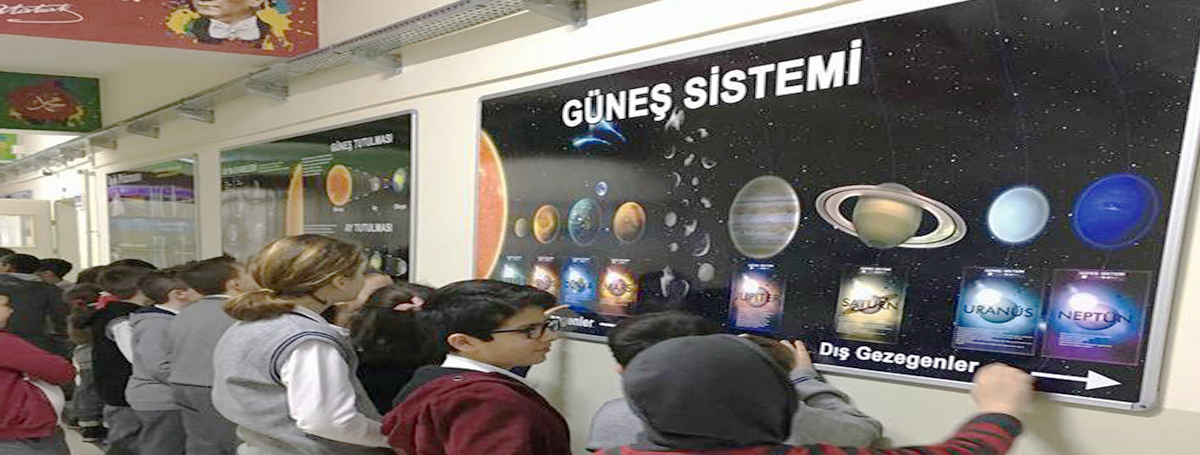
Throughout the Ottoman Empire, a crucial objective of education was to raise 'great Muslims'. Therefore there was a requirement for Islamic scholars, which was sustained through Islamic Faith Schools, called Madrasa.In 1913, the Medresetü-l Eimmeti vel Hutaba (School of ministers and preachers Medresetü-l Vaazin were combined to form the tangible origins of today's Imam Hatip high schools
In 1924, the Tevhid-i Tedrisat (Law of Unification of Educational Guideline was passed, changing the existing, mostly sectarian academic system with a nonreligious, centralist and nationalist education one. The brand-new law brought all educational institutions under the control of the Ministry of National Education. A Faculty of Theology at the Darülfünun (Istanbul University), special schools for training imams and hatips (ministers and preachers) were opened by the brand-new Ministry of National Education. Nevertheless, in 1930 İmam Hatip schools were closed and 1933 the Professors of Divinity was eliminated.
In contrast to the exclusively secularist nature of the education policy of the Republican People's Party (CHP) religious education was reinstated in 1948. This included the establishment of a Faculty of Theology at the University of Ankara in 1949. Primary steps for the facility of Imam Hatip schools started in 1951 under the Democrat Celebration federal government, which set up seven special secondary schools (Imam Hatip Okulları). In addition, in 1959 Islamic Institutes were opened for graduates of Imam Hatip schools.
Following the coup d'etat in 1960, Imam Hatip schools encountered the threat of closure. Following the return to civilian politics and the intro of the new constitution in 1961, graduates of Imam Hatip schools could just enrol in university programmes if they had actually passed courses used at nonreligious schools. Throughout the premiership of Süleyman Demirel nevertheless, graduates of Imam Hatip schools were admitted to university without such requirements. The 1971 Turkish coup d'état presented two key reforms: to start with junior high Imam Hatip schools were eliminated, and in 1973 Imam Hatip schools were renamed as Imam Hatip high schools. Under the subsequent National Education Basic Law, Imam Hatip schools were defined as employment schools, where students were to be trained as preachers and ministers or gotten ready for greater education.
Imam Hatip schools grew slowly in the beginning, however their numbers expanded quickly to 334 during the 1970s. The union federal government of 1974, established by the CHP and the MSP (National Redemption Celebration), committed to resume junior high schools and giving the right of entry to university through assessment. 230 new Imam Hatip high schools were opened in a duration of nearly 4 years. During the 1974-75 school year the variety of students taking care of the Imam Hatip high schools grew to 48,895. This number subsequently grew to 200,300 by 1980-81. In addition, women gained the right of entry to Imam Hatip high schools in 1976. The expansion of Imam Hatip high schools is frequently pointed out as the impact of the National Redemption Party's subscription of a number of unions with Nationalist Front governments.
Circumstance since 1980
The coup d'etat of September 12, 1980 is a vital turning point in the history of Turkey and also for the history of Ä°mam-Hatip high schools. Under military governance, graduates of Imam Hatip high schools got the right of entry to all university departments. In 1985, 2 brand-new Imam Hatip high schools opened, one in Tunceli, despite of the so-called ethnic structure of the area, and the other in Beykoz as an Anatolian Imam Hatip High School, with the objective of adding to the education of children of households who work abroad. Although the number of Imam Hatip high schools had not increased because, the variety of students attending Imam Hatip high schools has actually increased by 45%. This is partially due to the improvement in the quality of Imam Hatip high schools and the education used at such schools.
During the education year of 1973-74, the total number of Imam Hatip trainees was 34,570; in 1997 this number had actually sharply increased to reach 511,502. Along with this huge increase in appeal, the variety of schools also increased. The number of Imam Hatip junior high schools reached 601 and secondary schools 402. The increase in both student and school numbers can be credited to elements including the dedication of people to religion, dorm room facilities, scholarships, the admittance of females and a boost in need for spiritual education.
Research suggests that in between the years of 1993 and 2000, potential trainees signed up at Imam Hatip high schools mostly to get spiritual tutoring along with a more basic education.In addition, research study reveals enrolment at Imam Hatip high schools was based entirely on the trainee's choice. The third proposed consider the increase in appeal of Imam Hatip schools is the admission of female students in 1976. By 1998, practically 100,000 females attended Imam Hatip high schools, comprising almost half of all students. This figure is particularly revealing since females are not qualified to become either priests or ministers.
However, the intro of eight years of obligatory education in 1997 has seen an unexpected decrease in the popularity of Imam Hatip schools. In 1999, Additional reading the reclassification of Imam Hatip schools as "vocational schools" indicated that, although more alternatives had actually been offered to graduates, achieving locations at distinguished university courses ended up being more difficult.By needing that all 8 compulsory years of education be invested under the same primary-school roofing system, intermediate schools were abolished. Children might not go into occupation schools (one of them the Imam Hatip school) up until the ninth grade (instead of the 6th, as prior to).